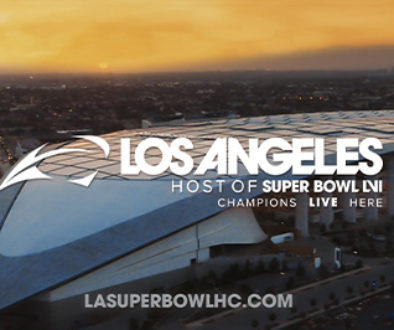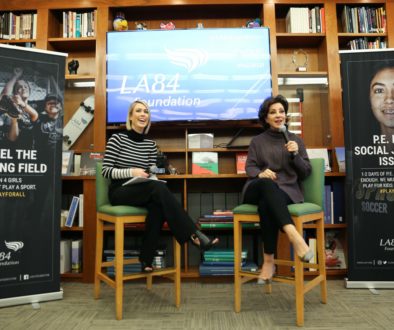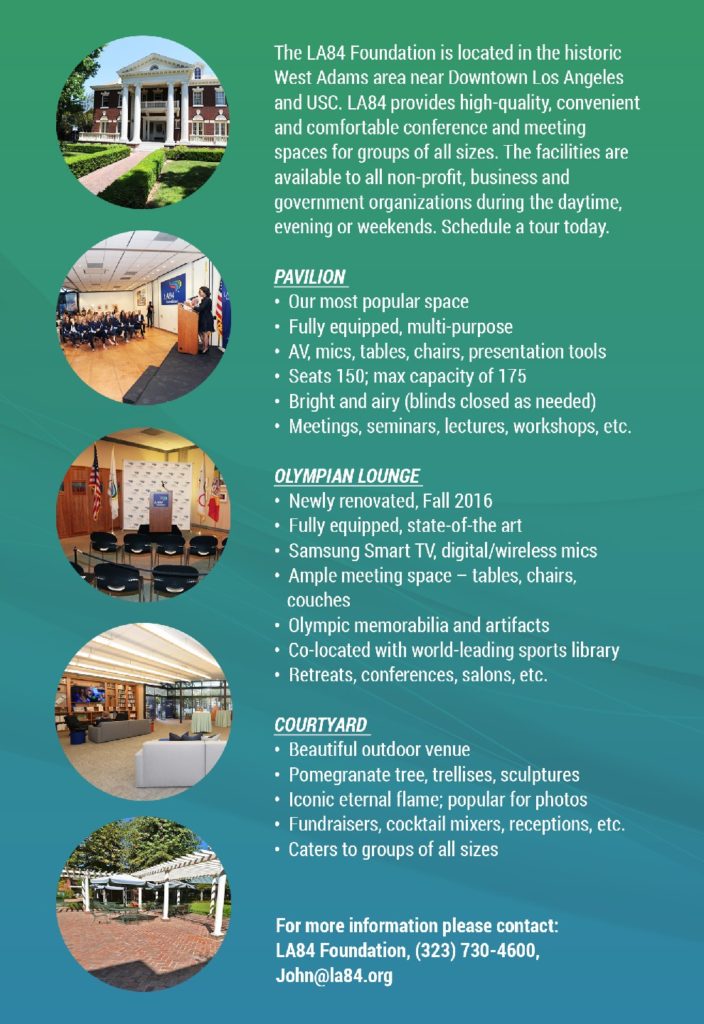SL Interview: Author Buzz Bissinger Discusses LeBron, Youth Sports, and Friday Night Lights
In 1988 reporter H.G. “Buzz” Bissinger journeyed to West Texas to write a book about the town of Odessa and its mania over the storied football team at Permian High School. Published the next year, “Friday Night Lights” was a reportorial triumph that, at once, captured the glory and the ignominy of youth athletics.
“Friday Night Lights” was an instant bestseller and, twenty years after its initial publication, remains a cultural touchstone. In 2002, Sports Illustrated ranked it as the fourth best sports book of all time. In 2004, it was made into a successful film; currently, it serves as the basis for a television show that airs on NBC.
Bissinger won the Pulitzer Prize while he was a reporter with the Philadelphia Inquirer; he now contributes to Vanity Fair magazine. He has also written “Three Nights in August” (2005), a journey into baseball strategy as seen through the eyes of St. Louis Cardinals’ manager Tony LaRussa.
Most recently, Bissinger has co-written “Shooting Stars” (Penguin; Amazon) with Cleveland Cavaliers superstar LeBron James. The book chronicles James’ successful and controversial high school basketball career in Akron, Ohio, and the enduring friendship he continues to share with four teammates-friends (collectively known as the “Fab Five”).
SportsLetter spoke to Bissinger about LeBron James and “Shooting Stars” as well as the legacy of “Friday Night Lights.”
— David Davis
SportsLetter: How did you get involved writing “Shooting Stars” with LeBron James?
Buzz Bissinger: It was kind of serendipitous. We happen to have the same literary agency in common, Janklow and Nesbitt. LeBron came in with the book idea, and an agent said, “I have the perfect guy,” because I had written about high school sports with “Friday Night Lights.”
SL: What attracted you to the project?
BB: What appealed to me about this was the story. I liked that this was not your typical autobiography. It’s a story with a beginning, middle and end, and LeBron is just one of many characters in it. He’s almost like a narrator. It’s as much about his teammates and his role models because he wanted, in a sincere and legitimate way, to pay homage to the people who made him what he is today. He didn’t want some endlessly self-indulgent story about, “Well, then I scored 40 points against the Lakers.”
SL: How did you work together on the book?
BB: We got going before the 2008-09 [NBA] season, and we probably met five or six times. We had to fit it in at the right moments because LeBron is obviously very busy. There were a lot of things he doesn’t remember – he’s lived like eight lifetimes in one – but I knew what holes and gaps there were that could be filled in by reporting and by the others. The book is in his voice, but it didn’t depend on him. It depended on interviewing the other members of the “Fab Five,” along with extensive interviews with Coach Dru [Joyce], Coach [Keith] Dambrot, and other family members.
SL: Had you seen LeBron play basketball while he was in high school?
BB: I didn’t see him play in person. Like many people, I first became aware of LeBron when he was on the cover of Sports Illustrated [during James’ junior year]. I watch “SportsCenter,” and I’m a sports fan. He is without a doubt the best athlete I’ve ever seen. He was a great football player in high school. He could have been a great tight end. If he played major league baseball, unlike Michael Jordan I think he would succeed at it. He’s big, strong, quick. When he’s going down the lane, I’m getting out of the way.
SL: Were there topics that were off limits?
BB: There were certain aspects of his personal life that he didn’t want to get into. One of those was his dad. I don’t think LeBron wanted to dwell on that because, to him, this book is about the kids that he grew up with, the kids who became his brothers.
In terms of the kids’ conduct during his junior year: when he read it, he didn’t say get rid of the smoking marijuana [admission], get rid of the fact that one of the kids admitted to cheating on tests and copying homework, get rid of the fact that we partied all night before the state championship, get rid of the fact that we were arrogant jerks. He didn’t say, “I don’t want that in, that’s going to hurt my image.” There was none of that.
SL: The book goes into depth about LeBron’s upbringing and the fact that he and his mother, Gloria, moved around a lot. How did that affect him?
BB: He developed an incredible attitude at an early age. He said, “What’s the use of complaining? I just put my things into my little backpack and said, ‘Let’s roll.'” He didn’t want to put any more pressure on his mother. When he was in the fifth grade, he went to live with the Walker family for a year or so. When he got into that family setting, he realized that this is what life should be about, with stability, with a mother, a father, sister and brothers. I think that was a seminal year in his life. That was the year that shaped him.
SL: In the book, LeBron credits “karma” with helping him become who he is today. What does “karma” mean to him?
BB: That came from him. I didn’t say, “Let’s call it karma.” That’s from him. He’s had exceptional karma. There are a lot of great athletes in this world who fall off the wagon. I wrote about this kid, Boobie Miles, in “Friday Night Lights.” In a sense, he’s the antithesis of LeBron: great athlete, good kid, but the exposure he gets in high school goes to his head. He couldn’t handle it. It’s had hideous consequences for Boobie. He’s really, really struggling with his life. He’s been in and out of jail.
LeBron could handle it. The Walkers come along and give him a sense of family when he needs it. He gets involved with Coach Dru, who’s the real deal. He’s one of the most decent, sincere guys you will ever meet. He and the other kids become inseparable friends, so it’s like he has brothers. Then, in terms of his development as a basketball player: how many kids get a high school coach [Dambrot] who’s been a Division I college coach? Coach Dambrot realizes that LeBron can be great and says, “I’m going ride his ass and I’m going to curse him out and push him like he’s never been pushed before because I want to make him great.”
As LeBron says, “That’s karma, man.” Even the karma of losing the championship game his junior year: that taught him a lot. That taught him about arrogance.
SL: LeBron decided not to go to a predominantly black public high school and, instead, attended St. Vincent-St. Mary High School, a predominantly white Catholic school. What was that like for LeBron?
BB: Up to that point, LeBron didn’t know many white kids. St. V. helped him learn more about the world. There were academic expectations. Once the kids got acclimated, once they got comfortable, and that took a while, it was a good experience for them.
SL: LeBron played football for three years in high school. What did that experience mean to him?
BB: I think it was great that he played two sports. It meant he had a real high school experience, a full life. He became part of the fabric of the school. LeBron was adamant about this. He said, “I love football. I’m playing football.” People had to finally tell him, “If you continue to play football and get injured, you’re costing yourself hundreds of millions of dollars.” He was an exceptional player, but he reluctantly decided not to play his senior year.
SL: How did LeBron handle his appearance on the cover of Sports Illustrated?
BB: The exposure the team got starting LeBron’s junior year was unparalleled for high school teams and for many college teams. There was probably more written about them than the Los Angeles Clippers. Sure, the team had a valley during their junior year, but overall I thought LeBron handled it well. To not go crazy, to not think that he can fly to the moon and back is a real testament to him, because the coverage was out of control. Who’s not going to think they’re a big deal if they’re on the cover of Sports Illustrated? You’re going to strut around, you’re going to be arrogant, people are going to think that you have a big head. That’s why it’s dangerous. But they really did right the ship as seniors. They realized that it’s about winning, it’s about teamwork.
SL: Should SI have put a high school junior on the cover?
BB: They supposedly soul-searched the decision. I think they thought, it’s going to be a big, sexy cover. It’s going to create buzz. It was as much about themselves and trying to get a big story going as it was about LeBron. This was clear exploitation. They got lucky because he turned out to be an exquisite player who was able to transform his game to the NBA. But for every LeBron, there are a thousand kids who have tremendous talent who don’t go anywhere. If I was the editor, I would not have done it because I’ve seen the destructiveness with a kid like Boobie. He was a god until he got hurt.
SL: What about other media coverage: should LeBron’s high school games have been nationally televised?
BB: I think it was wrong. Do I think [announcers] Bill Walton and Dick Vitale should have been broadcasting the St. V-Oak Hill game like it was the NBA championship? No, I don’t think it was necessary. Should the games have been on cable his senior year? I don’t think it was necessary. Should their home games have been moved to University of Akron? That was strictly done for money.
It’s not just basketball. ESPN covers the Little League World Series like it was the real World Series. It’s insane. It’s not right. They’ll put it on TV, use it for exposure, then someone will write that it’s too much. It’s the most disingenuous thing I’ve ever heard.
SL: What impact did all this have on LeBron?
BB: At the time, he loved it. What kid doesn’t want to see new places and play in college arenas and be on television? Now that he’s in his 20s, I think he sees that it went overboard. We’re so sports obsessed, but you’re supposed to go high school to learn. The point of high school basketball should not be to play all over the country.
SL: LeBron has said that he read “Friday Night Lights” in high school. Did he ever talk with you about that?
BB: I didn’t know that he read it in high school, but it doesn’t surprise me. The book has been used by high schools and colleges all over the country. It’s been singled out as one of the few books that you can get high school boys to read.
LeBron did tell me that he liked the book, that he liked the writing of it. I think he picked me [to co-write “Shooting Stars”] because he wanted some of my voice in the book. Ultimately, the book reflects his voice, but it’s a combination of him and me.
SL: How did what LeBron experienced in high school compare with the experiences of the football players from “Friday Night Lights”?
BB: In Odessa, football was king, god and country all the time. But outside of Texas and college recruiters, no one really knew about them. LeBron and the other members of the “Fab Five” got much more exposure, nationally and with the media, than the kids in Odessa got.
SL: Why did LeBron make it while someone like Boobie Miles didn’t?
BB: In a sense, “Shooting Stars” is almost the flipside of “Friday Night Lights,” where I saw the destructive role that sports can play on kids. It points out the downside of sports, how sports can lead to racism, how sports can lead to misguided values in terms of education. If sports consumes a community too much, it can hurt kids spiritually.
With “Shooting Stars,” sports played a very constructive role. It seems clear to me that LeBron was saved by a combination of basketball, the right adult models and, most important, by finding a group of friends at a very young age who became brothers on and off the court. Basketball kept these kids together. It taught them a lot about teamwork. It taught them about what happens when you become arrogant, about when you don’t listen. Ultimately, it taught them about what happens when you come together and commit yourself. The proof of that, to me, is that all the kids have gone on and done good things with their lives. We all know about LeBron, but the four other kids have had success, in terms of their education and sports. That was not always true in Odessa.
SL: In general, how have high school sports changed since the writing of “Friday Night Lights” 20 years ago?
BB: High school sports are covered more than ever before, with national television broadcasts and newspaper coverage – including the New York Times. High school kids know there’s lot of opportunities to be on television, to be in USA Today. With the Internet, everything spreads like wildfire. There’s constant rankings, there’s recruiting websites. That begets story after story. So, the exposure is greater than ever, and I think it’s damaging. It detracts from the purpose of school, which is education, and I think it puts too much pressure on kids. It forces them to specialize in one sport at a very young age, instead of having fun.
SL: This year marks the 20th anniversary of “Friday Night Lights.” What was your inspiration for the book?
BB: My inspiration for doing “Friday Night Lights” was on the basis of traveling cross country when I was in my 30s, just simply taking the southern route and driving through Mississippi and Georgia and Alabama and Texas and Louisiana. All hotbeds of high school football. In every town, no matter how dried up Main Street was, you’d see these football stadiums that were jewels. They were beautiful, the grass was well-watered, they were painted. Then you had those gorgeous lights, and it just rang a bell in my head. These are palaces, these are shrines, these are places almost like churches where people come to hope and dream and cheer for their boys on a Friday night.
SL: How did you choose Odessa?
BB: You can quickly narrow down the hotbeds of high school football. There’s Ohio, with Massillon, which has a pretty famous program. They still, when a baby boy is born in Massillon, put a plastic football in the crib. There’s western Pennsylvania, which has produced Mike Ditka, Joe Namath, Jim Kelly, Tony Dorsett. Aliquippa [High School] has had a very famous program. But it became apparent to me that, if you’re going to do it, you have to do it in Texas, where high school football has been huge for decades. I spoke with college recruiters and spoke to a writer named Carlton Stowers, who covered a lot of high-school sports. [Stowers is the author of “When Dreams Die Hard: A Small American Town and its Six-Man Football Team.”] They all said, to a fault, “Go to Odessa. There’s nothing like it.” When I went down there and saw the stadium that seated 19,000 and cost $5.6 million, and also saw the success of the team, it was clear to me that that was the place to do it.
SL: You recently returned to Odessa. Had you visited before and what was your impression of Odessa 20 years later?
BB: I had returned before, but it was privately. I still have some wonderful friendships down there. In 2004, on the eve of the release of the movie, Sports Illustrated asked me to go down and write about the town and their reaction to the book and write about some of the kids that I met and followed. I was there very publicly, and the reaction was good. They were excited about the movie. There were people in officialdom – a school board administrator, a former city councilman – who told me, “Your book really did change things. We hated you at the time. It was a hideous look in the mirror. But as we got distance from it, we realized that a lot of what you said was right and that we did have to change our priorities.”
I think they’ve done that. There’s more emphasis on education. Academics are improving. There’s now softball fields for girls; there’s soccer fields. In 1988, they didn’t know what soccer was. So, there’s been a shift. What’s interesting is that, in accompaniment with that shift, the fortunes of the football program sunk. Now, the football team is coming back up and the issue is: as they come back up, will there be the same type of fanaticism?
SL: There hadn’t been many books about high school sports before yours, with the possible exception of Willie Morris’ “The Courting of Marcus Dupree.” Did that have any influence on you when you wrote “Friday Night Lights”?
BB: No, not at all. I read “The Courting of Marcus Dupree” and have great admiration for Willie Morris. But it was not a well-reported book. It was much more about Willie’s observations. He didn’t dig into areas that you had to dig into.
SL: Since the publication of “Friday Night Lights,” there’ve been a lot of books about high school sports that follow the season-in-the-life rubric. Have there been any that you liked?
BB: There was a book written about high school hockey in Minnesota [“Blades of Glory: The True Story of a Young Team Bred to Win,” by John Rosengren]. That’s one that comes to mind.
SL: What’s your opinion of “Friday Night Lights” as a film and as a television show?
BB: I have to give full disclosure: my cousin, Pete Berg, directed the film. Having said that, I thought it was a terrific movie. I had no illusions. Pete and I talked about this. He said, “Look, I’m not making a documentary. I’m making a Hollywood film, and things from the book are going to have to go. A lot of the racism that you wrote about in the book I can only hint at. I only have two hours. You had 400 pages.” I believe that the movie did capture one of the essential themes of the book: the enormous, almost intolerable, pressure being placed on these kids and their gladiatorial-like ability to rise above it and become a team. I thought the performances were beautiful and the film has really held up well.
The TV show I don’t watch regularly, maybe because I’m “Friday Night Light”-ed out. When I’ve seen it, it’s been terrific and arguably one of the few quality shows left on television. I met with the writers early on, before the show was on. They didn’t need me. They knew what they were doing.
SL: What about your experiences with your own kids in youth sports?
BB: I have three kids, and two were not athletes. My son Gerry was a pretty good athlete. He went through Little League and played varsity tennis in high school and for two years in college. I coached his Little League team and fell into the same trap as many parent-coaches. You go in saying, “This is going to be fun, this is going to be great, we’re going to do it right.” And, you don’t. You want to win and you want the kids to win. I wasn’t a screamer and a yeller, but I got into fights with other coaches and I put tremendous pressure on Gerry. After every game, there would be nothing but silence in the car, and then I would begin to criticize him: “Why’d you do that? Why’d you walk that guy? What about that play at third base?” He would get very, very upset. I loved coaching, but after about three years I said, “I don’t think I’m doing anyone any good.” So, I stopped.
SL: What leads to a positive experience with youth sports?
BB: I think it all depends on the coach. A good coach can make all the difference in the world. For instance, LeBron was lucky in finding a great role model in Coach Dru. He was LeBron’s first real coach, when he started playing AAU ball. Coach Dru is one of those rare guys: he wants to win and is competitive, but he truly wants to teach these kids life lessons. His goal is to mold them into men. His sincerity in helping these kids beyond basketball – in growing and becoming mature – is the difference.
SL: “Shooting Stars” is coming out around the same time as a documentary film about LeBron’s high school career, “More Than a Game,” is released. What’s the difference between the two?
BB: They have similar themes and they cover the same period of time. But a film can’t go into things in the same type of depth that a book can. The book is told totally from LeBron’s point of view, whereas the film is an ensemble of different voices.
SL: What’s the next book that you’re working on?
BB: In terms of books, I like to mix things up. This next book is about my twin sons, who were born 13 weeks premature in 1983, at a time when most twin boys did not survive. Gerry somehow went through unscathed, went to college, got a Masters at Penn, is teaching, and is about to be married. He has the kind of life that every parent wishes for their child. Zach had some trace brain damage because of oxygen deprivation to his lungs when he was born. He’s a wonderful kid, but he’s never going to drive a car or live independently or get married. It’s written from the perspective of a father trying to deal with these twin boys, these two inverted mirrors. I hope to have it done in early spring, tentatively to be published in the fall of 2010 by Penguin.




